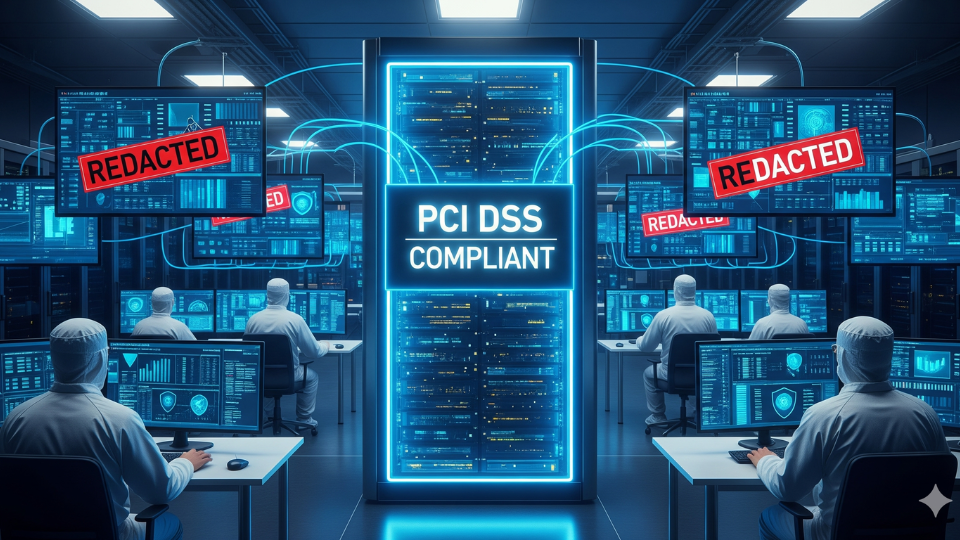Guardrails and Redaction: Protecting PII and Payments on Calls with Voice AI

Imagine a customer service call, smooth and efficient, powered by cutting-edge voice AI. Then, a moment later, a critical piece of Personal Identifiable Information (PII) or payment detail is inadvertently captured and stored in an unsecure log, creating a massive compliance risk. The promise of voice AI in revolutionizing customer interactions is undeniable, offering speed, consistency, and scalability. However, this powerful technology also introduces new vulnerabilities, particularly when handling sensitive data like PII and payment information. Deploying voice AI without robust guardrails and sophisticated redaction capabilities isn’t just risky; it’s an open invitation to data breaches, regulatory fines, and irreparable damage to customer trust.
Understanding the Compliance Imperative for Voice AI
The regulatory landscape around data privacy is complex and ever-evolving. Regulations like GDPR, CCPA, HIPAA, and PCI DSS dictate strict rules for how organizations collect, process, and store sensitive customer data. When voice AI enters the picture, every spoken word, every transcribed snippet, and every piece of derived insight becomes a potential compliance challenge. Failing to adhere to these standards can result in hefty fines, legal battles, and significant reputational damage. Therefore, integrating compliance-by-design into your voice AI strategy isn’t merely a best practice; it’s a foundational requirement. Your voice AI must be explicitly designed to protect sensitive information from the very first interaction.
Proactive PII Detection and Redaction at the Source
The most effective way to protect PII is to prevent its unencrypted storage or transmission in the first place. Modern voice AI solutions employ sophisticated PII detection and redaction capabilities that operate in real time. As a customer speaks, the AI’s Automatic Speech Recognition (ASR) engine and Natural Language Understanding (NLU) models are trained to identify specific patterns that indicate sensitive information, such as:
- Credit card numbers: Sequences of 13-19 digits, often with accompanying keywords.
- Social Security Numbers (SSN) or National ID: Specific numerical patterns.
- Bank account details: Account and routing numbers.
- Names and addresses: Contextual recognition of personal identifiers.
- Health Information: Medical record numbers, diagnoses, etc.
Once identified, this data is immediately redacted from transcripts, call recordings, and logs, replaced with placeholders (e.g., [CARD_NUMBER], [SSN]) before it ever reaches your storage systems or downstream applications.
Securing Payment Information with PCI DSS Compliance
Handling payment card industry (PCI) data requires an even higher level of scrutiny due to the stringent PCI DSS (Payment Card Industry Data Security Standard) requirements. Voice AI must be engineered to ensure that no raw cardholder data (PAN, CVV, expiration dates) is ever stored or made accessible to unauthorized personnel, whether human or automated. Solutions for this include:
- Dual-Tone Multi-Frequency (DTMF) Masking: When a customer enters card details using their phone’s keypad, the tones are masked, preventing the digits from being captured by ASR or audible in recordings.
- Agent-Assisted Secure Forms: The AI can guide the customer to input sensitive payment data directly into a secure web form, bypassing the voice channel entirely for those critical digits, while the agent remains on the line to assist.
- PCI-Compliant Environments: Ensure your voice AI infrastructure is hosted and operated within environments certified for PCI DSS compliance, providing an extra layer of security and auditability.
These measures ensure that even if a voice AI is handling payment-related interactions, the sensitive data remains protected from end to end.
Establishing Guardrails: Access Control and Audit Trails
Beyond redaction, establishing robust guardrails is crucial for maintaining data security and compliance.
- Role-Based Access Control (RBAC): Implement strict RBAC to ensure that only authorized personnel can access voice AI data, logs, or configuration settings. Access should be granted on a need-to-know basis, with different levels of permissions.
- Comprehensive Audit Trails: Maintain detailed audit trails of all system activities, including who accessed what data, when, and from where. This provides a clear record for compliance checks and incident investigations.
- Data Retention Policies: Define and enforce clear data retention policies for all voice AI-generated data. Automatically delete sensitive information once its legal or business need has expired.
- Encryption at Rest and in Transit: All data, including call recordings and transcripts, must be encrypted both when stored (at rest) and when transmitted between systems (in transit).
These guardrails act as a layered defense, protecting data even if an unauthorized access attempt occurs.
Continuous Monitoring and Compliance Audits
The work doesn’t stop once guardrails are in place. Continuous monitoring and regular compliance audits are essential for adapting to new threats and evolving regulations.
- Automated Monitoring: Deploy automated tools to continuously scan for unredacted PII or suspicious data access patterns within your voice AI systems.
- Regular Audits: Conduct internal and external compliance audits frequently to assess your voice AI’s adherence to relevant data protection standards.
- Threat Intelligence: Stay informed about emerging cybersecurity threats and vulnerabilities, updating your voice AI’s security protocols as needed.
- Employee Training: Ensure all personnel involved with voice AI development, deployment, or monitoring are fully trained on data privacy best practices and compliance requirements.
This proactive approach to security and compliance creates a resilient voice AI system that protects both your customers and your business.
Voice AI offers incredible potential for transforming customer service, but its power comes with a critical responsibility: safeguarding sensitive customer data. By implementing robust PII detection and redaction, adhering strictly to PCI DSS standards for payment handling, establishing comprehensive guardrails like RBAC and audit trails, and committing to continuous monitoring, organizations can leverage voice AI with confidence. Protecting PII and payments isn’t just about avoiding penalties; it’s about building and maintaining the invaluable trust of your customers. Are your voice AI solutions equipped with the necessary protections to navigate the complex world of data privacy?













